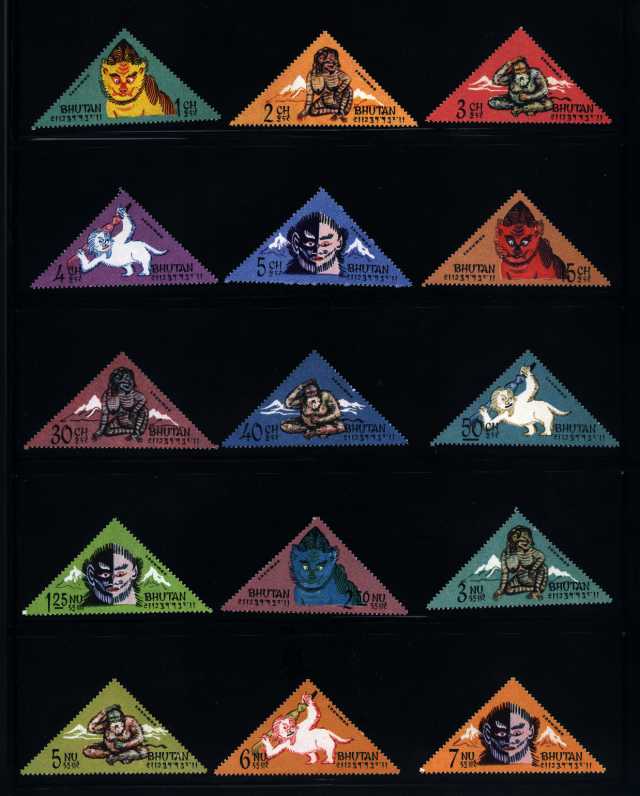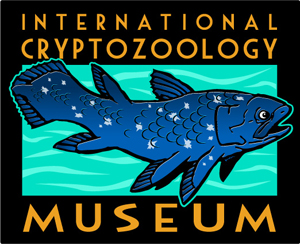
August 9, 2008
The Associated Press carries an article today, in essence, saying the belief in the Yeti is on a decline in Bhutan as it becomes modernized.
Here are some snippets from “Losing the Yeti in Forgotten Nation of Bhutan,” by Tim Sullivan:
In the West, yeti-like creatures long ago were reduced to myth. The Abominable Snowman is something from a “Scooby Doo” episode, or part of the latest installment in Hollywood’s “Mummy” franchise. To mainstream science, the notion of Bigfoot is little more than a joke.
But across the Himalayas the beast was seen as real, known for generations in a half-dozen countries from Tibet to Pakistan. It was a region flush with wildlife, where tigers, bears and wild dogs roamed thick mountain forests and remote river valleys. Here, if nowhere else, the yeti was simply one more creature.
For Bhutan, a country barely noticed by much of the world, it became something even more.
In a nation stumbling nervously into modernity, the hulking mountain beast was publicly celebrated, becoming a 20th-century talisman against unbridled change and a link to ancient traditions. Stories of its travels were told by the king and top government officials. The Sakteng Wildlife Sanctuary, a large national park, was created in part as a place to protect it. Once Bhutan bothered to set up a postal system, in the early 1960s, it issued stamps honoring an animal that science insists does not exist.
“Everyone knew it was there,” Dorji says. “It was like the bears or the leopards. Why would we question it?”

No one is sure how far back the stories go.
In A.D. 79, the Roman scholar Pliny the Elder described immensely strong Himalayan animals with “human-like bodies.” Chinese manuscripts from the 7th century mention hairy creatures similar to the yeti.The tales change from region to region across Asia — yetis were man-eaters in some places, grass-eaters in others. In many places, the beast was seen as a harbinger of death, a combination of man, animal and demon.
Some things, though, were certain. It was tall, hairy and very strong. It lived mostly in the high mountains and avoided people. Only a handful of yak herders might report sightings with any regularity, but everyone knew it was out there, and feared it.
In Bhutan, most people call it the “migoi” — strong man — but it goes by any number of names across the Himalayas: glacier man, snow goblin, wild man.
Of course, read the article with a bit of skepticism, because it is written by a Westerner trying to understand Bhutan. For example, he says, “To Westerners, though, it is known as the Yeti — a name believed to come from a Tibetan word for bear,” which is not factually correct.
Ask politely, and Sangay Wangchuck will take you into a meeting room at the headquarters of Bhutan’s conservation department and show you half a dozen framed plaster casts mounted on the wall. The frames show the outline of irregular grayish footprints around 12 inches long. All, according to small signs, come from yetis.
Wangchuck, the national director of conservation, knows what it is to wrestle with belief and science.
He has a master’s degree from Yale and a doctorate from the Swiss Federal Institute of Technology. He’s a scientist who oversees legions of rangers and researchers. His training tells him not to believe in something unless he has proof.
But the yeti stories run deep here, and denial means more than casting off an old belief.
“My parents, my village, they still believe,” says Wangchuck, a genial, erudite man.
When he talks about the yeti, words stumble out in sentence fragments, trying to straddle the line between science and heritage.
“As a biological entity, it’s very difficult” to believe, says Wangchuck, looking down at his desk. But does it exist? “It’s very difficult to say no.”
So this man of science has found a very unscientific middle ground. “I tell people: ‘Let’s not dig too much into it. Let’s talk about it, but leave it at that, and not conclude ‘Yes, it’s there,’ or ‘No, it’s not there.'”
If you go to the AP site of the article, click on photograph number 3. There you will see Sangay Wangchuk, national director of conservation, standing a nice display of plaster casts that he claims are of footmarks from a Yeti, at Thimpu, Bhutan, Wednesday, March 5, 2008. It seems to be a worthy collection that needs to be more closely photographed.
Meanwhile, ever wonder what happened to that Yeti cast collected by Josh Gates? Here’s the answer:
Josh Gates (right), host of the Sci-Fi Channel series “Destination Truth,” presents a cast of what is believed to be a yeti footprint to Joe Rohde, vice president/executive designer of Walt Disney Imagineering. Gates and his expedition team found the footprint while filming an episode of “Destination Truth” in Nepal in November 2007. The cast will soon be placed on display at Expedition Everest, a Himalayan-themed, high-speed, coaster-like attraction at Disney’s Animal Kingdom, where guests come face-to-face with a Yeti.

Miles Gunter has a forthcoming comic book that may be of some interest. It is entitled Yeti vs Vampire, and you can read more about it here.
Also, there’s a four page preview here.
+++

Also, yes, the new Mummy movie opened. Please refer to the following past postings here on Cryptomundo on our coverage of the inclusion of Yeti in this film:
+++++

Please join the spirit of the Yeti, and support the museum today. Please use PayPal today or directly send a check, money order, or, if outside the USA, an international postal money order made out to
International Cryptozoology Museum
c/o Loren Coleman
PO Box 360
Portland, ME 04112
Donations via PayPal my be sent to lcoleman@maine.rr.com
Please “Save The Museum”!
Easy-to-use donation buttons are now available here or merely by clicking the blank button below (which you can use without being a member of PayPal).
Thank you, everyone!
About Loren Coleman
Loren Coleman is one of the world’s leading cryptozoologists, some say “the” leading living cryptozoologist. Certainly, he is acknowledged as the current living American researcher and writer who has most popularized cryptozoology in the late 20th and early 21st centuries.
Starting his fieldwork and investigations in 1960, after traveling and trekking extensively in pursuit of cryptozoological mysteries, Coleman began writing to share his experiences in 1969. An honorary member of Ivan T. Sanderson’s Society for the Investigation of the Unexplained in the 1970s, Coleman has been bestowed with similar honorary memberships of the North Idaho College Cryptozoology Club in 1983, and in subsequent years, that of the British Columbia Scientific Cryptozoology Club, CryptoSafari International, and other international organizations. He was also a Life Member and Benefactor of the International Society of Cryptozoology (now-defunct).
Loren Coleman’s daily blog, as a member of the Cryptomundo Team, served as an ongoing avenue of communication for the ever-growing body of cryptozoo news from 2005 through 2013. He returned as an infrequent contributor beginning Halloween week of 2015.
Coleman is the founder in 2003, and current director of the International Cryptozoology Museum in Portland, Maine.
Filed under Abominable Snowman, Breaking News, Cryptomundo Exclusive, Cryptotourism, CryptoZoo News, Cryptozoologists, Cryptozoology, Expedition Reports, Folklore, Footprint Evidence, Television, Yeti